In this comprehensive guide, we delve into the essential techniques and timings involved in HDPE pipe fusion, a critical process in plastic welding. High-density polyethylene (HDPE) pipes are renowned for their durability, flexibility, and resistance to various chemicals, making them a popular choice for various applications, from municipal water systems to industrial projects. Understanding the intricacies of pipe fusion is vital for ensuring a secure and leak-free connection. This article will cover various welding techniques, the importance of proper timing during the fusion process, and best practices to achieve optimal results, providing readers with the knowledge they need to harness the full potential of HDPE pipe technology.
What is HDPE Pipe Fusion?
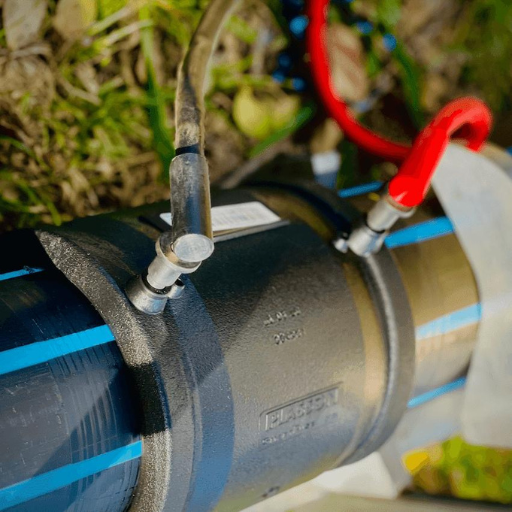
Definition of HDPE Pipe Fusion
The joining of two parts of High-Density Polyethylene (HDPE) pipe using heat and pressure to create a firm and long-lasting bond is called HDPE pipe fusion. This method ensures that the joint is as strong or more robust as the tube for steady flow without any leakages. Several fusing methods include butt fusion, socket fusion, and electrofusion,, among electrofusionding on different applications and pipe diameters. Proper heating and cooling are crucial to ensure optimal joint strength since their absence makes fusion less effective.
Types of Fusion Welds
- Butt Fusion: It’s one of the mIt’scommon techniques for connecting HDPE pipes. In butt-fusion, the pipes’ edges are pipes until they get molten; when both ends become sufficiently softened, they are put together, resulting in a solid connection on cooling down. The method works best with large-diameter pipes because it creates strong and dependable connections. In this case, one end of a pipe, known as a socket, is heated while another end, known as a spigot, is also heated. After heating up, the fixture gets into its respective socket, where it remains until it cools down, forming a solid joint. Socket fusion uses small-sized pipes mainly due to their simple nature.
- ElectrofuElectrofusionthis method, a coiElectrofusion fitting generates heat through electric current, melting the polyethylene around it. The fitting bonds firmly with the pipe once coolant sets in place after the process. This technique can be utilized where limited space is available, especially when connecting dissimilar pipe sizes or materials.
Importance of Pipe Fusion in Construction
Pipe fusion plays a vital role in construction by ensuring piping systems remain intact and durable throughout their life spans. Adequately fused joints create a watertight connection,, thus maintainingefficient water supply schemes and gas supply systems [3]. Moreover, the strength of fused joints supports the overall stability of infrastructure, minimizing the chances of damages that would require costly repairs and service interruptions. Fusion techniques also simplify installation procedures, reduce wastage, and reduce costs associated with maintenance or replacements. It is also essential when doing pipe fusion in environmentally sensitive areas as it helps safeguard against contamination, thus promoting sustainable construction practices.
What are the Different Welding Techniques for HDPE Pipes?
Explanation of Butt Fusion
It is a technique most commonly used for HDPE pipes and fittings. It typically starts by aligning the ends of two pipe segments to be joined, which are then heated through specialized heating elements till they attain certain temperature levels enough to soften their material. Once such proper temperatures are reached, the heating elements will be removed while the pipe ends are pressed with controlled force, allowing them to cool and fuse. The process creates a homogeneous joint with strength and durability equivalent to the base material. In particular, butt fusion has been known to be more advantageous in contexts involving wider diameter pipes as this enables structural connection without requiring other connectors or fittings,, thus reducing chances of leakages and improving efficiency in fluid transportation systems.
Socket Fusion Process
Socket Fusion is famous for joining HDPE pipes and fittings on small diameter sizes. This involves inserting one end of the pipe into a socket fitting. At first, the pipe section and fitting were made hot using a heat-generating unit until the surface attained optimum fusion temperature. As soon as it reaches the correct temperature, we can push it through the fitting so that these softened materials will contact each other when it cools down, thereby leading to their weld formation. An intense pressure-tight joint is created by this method that can withstand internal and external forces, making it ideal for different piping applications where reliability is an important feature. The simplicity of socket fusion provides an easy way to go while its speed ensures prompt service delivery; moreover, the absence of extra connections minimizes leaks.
Overview on Electrofusion
ElectrEleElectrofusionectrofusionyethylene (PE) pipes and fittings via electrically induced heated elements. First, embedding the heating element into the fitting, which is then activated using regulated electrical current, takes place after this process begins. When electricity passes through these elements, it results in melted surfaces on both the pipe plus joint, enabling a secure bond once cooled down afterward. This method is beneficial when traditional fusion methods are impractical, like space constraints or when dealing with pipes of different sizes. Electrofusion joints and leak-free connectioElectrofusionst for gas and water utilities that involve high-risk applications. Furthermore, this technology has the added advantage of enabling accurate control during welding, ensuring uniform quality across various installations.
How Long Does HDPE Pipe Fusion Take?
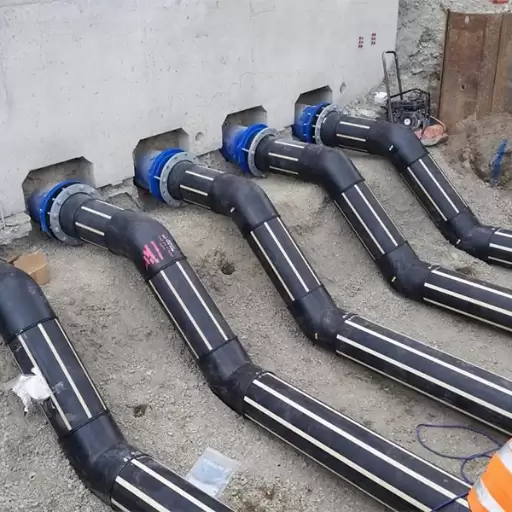
Factors Influencing Cooling Time
Various essential factors affect the cooling time of HDPE pipe fusion. First, the diameter and wall thickness of the pipes play a significant role because a larger thermal mass is associated with more extended cooling periods for bigger pipes. Cooling rates are also affected by ambient temperature and environmental conditions; for instance, cool temperatures will speed up the cooling rate, whereas warmer ones may prolong it. Furthermore, the solidification period depends on socket fusion or electrofusion type electrofusion. HDPE materials’ density and molecular weighelectrofusionanufacelectrofusionfacturer, affecting joint integrity. Lastly, it is possible to adjust the cooling time depending on the joint design and application requirements for performance optimization through different scenarios.
Typical Heating Times for Different Applications
Heating times for HDPE pipe fusion may vary radically based on pipe diameter, wall thickness, and the specific fusion method used. Smaller pipes (about 1-2 inches) take about 30 seconds to a minute, while larger ones (3-8 inches) might need between 1 and 2 minutes for socket fusion heating. For electrofusion, small electrofusion may take up to two minutes, while electrofusion inches will have heating times between three and five minutes. To achieve the best results, manufacturers’ recommendations should be followed under each application.
Recommended Minimum Cooling Time
The recommended minimum cooling time required by HDPE pipe joints is usually between 15 to 30 minutes, depending on the size and kind of joint being made. In somSometimes fifteen minutes can be enough for small small-diameter. At the same time, much more extended periods, significantly more than half an hour, are essential before hardening occurs so that they become strong enough not just to withstand pressure but also from falling apart due to their weight onto someone’s feet or someone parts, which can be very dangerous if we consider circumstances like this. However, care must be taken when considering factors such as ambient temperature, specific application, etc, since they may dictate the cooling time needed. By observing these instructions, one can realize an optimum performance of fusion and joint strength joints.
What Equipment is Used in HDPE Pipe Welding?
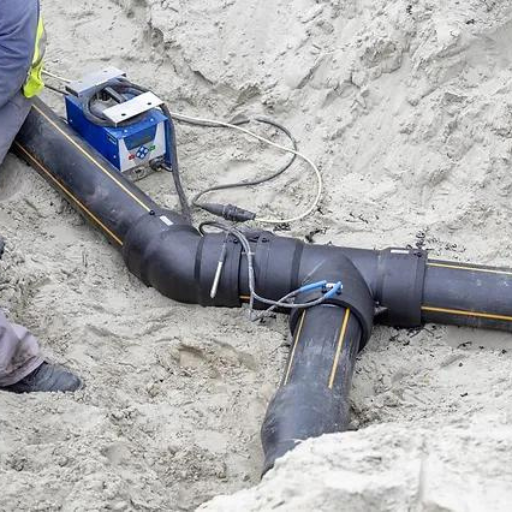
Various Designs of Welding Machines
Different designs of welding machines for HDPE pipe fusion are tailored to suit various techniques such as socket fusion, butt fusion, and electrofusion. Sockeelectrofusionines have heating elements in a smaelectrofusione the pipe ends can be heated rapidly. On the other hand, butt fusion machines use clamps and heating plates to align and join the pipe perfectly ends together. For electrofusion, machinelectrofusion is used to heat the electrical cuelectrofusionses fittings for more controlled melting processes. All welding machines should have temperature control and time management features for proper operation and optimal joining quality. Additionally, portability and easy installation are essential factors in on-site applications.
What does “Fusion Machine” mean?
A fusion “machine refers to special equipment welding thermoplastic materials, especially when joining high-density polyethylene (HDPE) pipes. These ensure solid and permanent connections by using different fusing procedures like butt fusion, socket fusion, or electro-fusion methoelectrofusionone comprises heating elementselectrofusionher ends of these pipes/fittings with clamps holding them together while maintaining required heat levels as controlled by digital systems for efficient fusing. To withstand environmental pressures as well as mechanical stresses, durable connections that can last long must be made by operating this machine very precisely.
Understanding the Role of the Welder
The role of welders is critical in ensuring the soundness and strength of thermoplastic joints from failing prematurely at low loads they were not designed for given applications envisaged at design stages. Fusion machinists should know how best to operate their tools through a selection of appropriate methods and joining techniques depending on the types of materials involved in a project or any other job requirements. This requires them to set up proper parameters, including a suitable atmosphere, acceptable temperature range, and controls within safe limits, then maintain those during the joining process, leading to good welds being done here correctly according to specifications given by others. Welders should also be capable of examining joints for quality assurance, rectifying problems arising during welding, and conforming to safety regulations. Combining theoretical knowledge and practical experience enables an excellent welder to meet industry standards regarding long-lasting connections that don’t fail quickly.
What are the Advantages of Using HDPE Pipe Fusion?
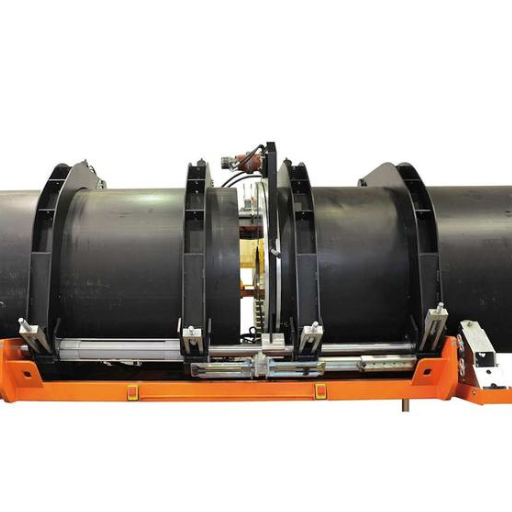
High-Density Polyethylene Pipe Benefits
High-density polyethylene (HDPE) pipe offers numerous advantages, making it a favorite in the market. To begin with, its corrosion resistance is why it stays longer than traditional materials, reducing maintenance and replacement expenses. Furthermore, HDPE’s flexibilityHDPE’ss it to be installed easily on various terrains, thereby reducing leak points and joints. Light makes transportation and handling more accessible, improving efficiency at work sites. HDPE also has impact resistance and will not break under stress, instilling confidence when using it, especially in extremely harsh environmental conditions. Lastly, fusing makes it possible to have seamless joints, which are crucial for the overall integrity of the entire piping system; thus, anyone looking for durability and reliability should consider using HDPE.
Comparison of Fusion Welding with Other Techniques
When I compare fusion welding with other methods like conventional arc welding or soldering, I find some key areas where this method performs better in terms of efficiency and quality of joint created. Moreover, unlike alternative techniques, fusion welding yields strong and perfect connections that help reduce the chances of leaks. On the other hand, arc welding causes weak points through heat-affected zones while flux is often required during solders, although they might not be as good at maintaining their integrity compared to this variation. In addition, when time is an important issue, such as massive projects, fusion welding is faster and more beneficial as installation can occur almost immediately after joining. Ultimately, when constructing pipes for any purpose, I prefer fusion welding due to its resilience plus cost-effectiveness, making it superior among all other alternatives.
Long-term Performance of Fusion Welds
From what I have observed over time about my own experience involving long-term performance, with HDPE being one of them, fusion welds are excellent performers. These welds can hold up against different environmental stresses, including temperature variations and chemical exposure. Fusion welding also has seamless connections; thus, in this case, the life lengths of the pipe systems under consideration are extended by reducing leakages. As time passes, I have noticed that maintenance is less frequently necessary for fusion welding projects than other methods. This robustness improves operation efficiency and saves costs in the long run, reinforcing my choice for fusion welding over any other option, especially regarding mission-critical applications.
Reference sources
- HDPE Pipe Welding & Joining – This resource provides detailed information on socket fusion heating and cooling times for various pipe sizes.
- A Welder’s Guide to Welder’se Fusion – This guide offers a comprehensive overview of HDPE pipe fusion, including techniques and applications in different systems.
- Butt Fusion Welding of HDPE Pipes – This PDF document explains the butt fusion process, which is a widely used method for connecting HDPE pipes, detailing the necessary steps and considerations.
Frequently Asked Questions (FAQs)
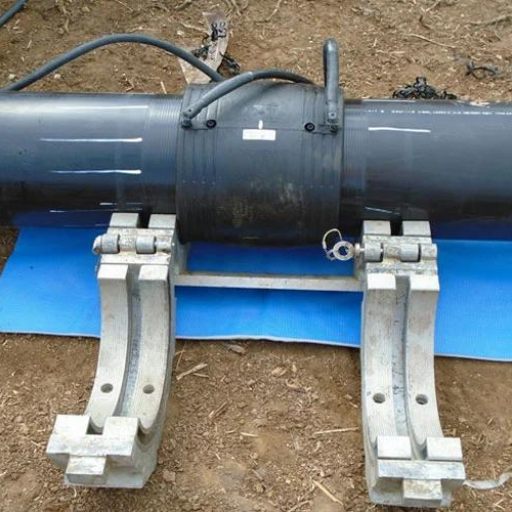
Q: What are the temperatures that can help with welding HDPE?
A: The welding temperature for HDPE ranges typically from 400°F to 450°F (204°C —232°C), and maintaining this temperature is imperative to attaining a solid fusion joint.
Q: How do I ensure a good fusion joint when fusing HDPE pipe?
A: For a good fusion joint, you need clean surfaces, the right welding temperature, exert enough pressure, and cool down for an appropriate time afterward.
Q: What is poly welding, and how does it apply to HDPE pipe fusion?
A: Poly welding involves several fusion methods, such as HDPE butt fusion and saddle fusion, which are used to join plastic pipe materials like hdpe. It ensures a uniform and strong bond between the pipes and fittings.
Q: What is the purpose of the bead during HDPE fusion?
A: A bead occurs at the end of a fusion, indicating that heating elements were practical. A correct bead is needed since it suggests that there was a successful fiber structure and helps to maintain connection integrity
Q: What equipment is generally used for HDPE butt fusion?
A: Hdpe butt fusion utilizes equipment such as a McElroy or what is commonly known as a fusion machine. This machine applies heat and pressure on both ends of pipers, making them fuse permanently.
Q: How long should I leave the pipe for cooling after hdpe butt fusion?
A: After doing an HDPE butt joint, allow for about 20-30 minutes of cool-down period, depending on the size of the pipe and ambient temperature, for optimum strength of such parts.





